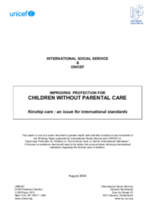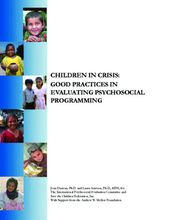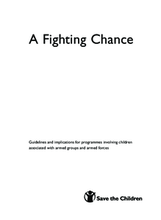Demographic Data
|
Sources: World Bank, UNICEF, UNDP HDR 2015, DHS 2013 |
Displaying 14111 - 14120 of 14551
Outlines how a child rights approach can be used to strengthen policy implementation and provides recommendations as to how the EU institutions can move forward in implementing commitments to OVC.
Toolkit for the founding and expansion of HIV/AIDS responses in development programs. Includes hands-on tools and support documentation.
Outlines UNICEF’s initial and follow-up responses in protecting and caring for women and children.
A paper outlining the use of formal and informal kinship care, child headed households and cross border kinship care. It discusses the advantages and limitations of each, including welfare costs, and argues for international standard setting.
A comprehensive and detailed template for development and evaluation of psychosocial support projects. Emphasis on raising awareness of cultural and ethical issues associated with psychosocial interventions.
A toolkit offering operational guidance and techniques for eliciting child participation in primary and secondary research. Includes in-depth consideration of related ethical issues.
Summary table of provisions of international humanitarian law and other provisions of international law specifically applicable to children in war.
A detailed policy framework for dealing with children associated with armed groups and armed forces. Includes a comprehensive annex outlining selected literature and useful websites.
Discusses the interplay between informal and formal safety net mechanisms in supporting orphans and children made vulnerable by HIV/AIDS. Includes recommendations for strengthening traditional family and community safety nets weakened by the epidemic.
A short discussion of various safety net program options and considerations for effective program design. Focus on reducing poverty in sub-Saharan Africa









